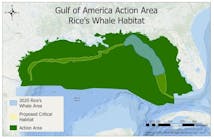North Dakota flaring reduction policy may impact January production
North Dakota production continued to climb in May but new requirements in the state’s flaring reduction plan slowed permitting activity in June and may lead to production curtailments for some operators early next year.
About 75% of permit applications required an extra 2-7 days of processing time while the state contacted operators to obtain additional information on gas processing plans, Lynn Helms, director, North Dakota Department of Mineral Resources, told reporters during a July 14 conference call.
“At least 75% of the permits are missing one or more pieces of information,” Helms said.
The state began requiring operators to submit gas capture plans with permit applications on June 1. Plans include information on area gas-gathering system connections and processing plants; the rate and duration of planned flowback; current system capacity; a timeline for connecting the well; and a signed affidavit verifying that the plan has been shared with area midstream companies.
The next deadline for the flaring reduction plan is fast approaching. The state expects to capture 74% of gas production by Oct. 1, rising to 90% by Oct. 1, 2020 (OGJ Online, July 2, 2014). Operators will submit their October production numbers to the state on Dec. 1 and those that fail to capture and utilize at least 74% of gas production can expect to receive letters from the in December.
“There will be operators who likely will receive letters in December saying ‘In January, you have to curtail production at a list of wells,’” Helms said.
About 72% of statewide gas production was captured in May. The remaining 28% was flared.
The implementation of the flaring reduction policy has not yet impacted production. The state’s Department of Mineral Resources reported July 14 that oil production rose 3.6% to 1.04 million b/d in May—the largest production increase since August. Gas production increased 8.5% to 1.19 bcfd.
North Dakota recently surpassed Alaska to become the second-largest oil-producing state in the US.
The statewide rig count held steady at 191, but completion work was slowed by heavy rains and windstorms near Dickinson and Minot in Stark and Ward counties, respectively. The number of wells awaiting completion increased by 10 to 610.
A surge in completion activity is expected in coming months as operators work to clear backlogs before winter. This should result in production growth of 5-6% in June, July, and August.
Concerns addressed
The state will conduct a meeting with operators next week to answer questions regarding the enforcement of the flaring policy, Helms said. A list of about 60 questions has been compiled so far. “It appears their number one concern is outages on the part of [gas] gatherers and midstream companies that they don’t have any control over,” Helms said.
One large midstream company plans to temporarily take offline compressor plants across southern North Dakota in coming weeks as it works to upgrade their capacity. The rolling maintenance is expected to occur during a 45-day period.
“That’s going to result in some increased flaring and [operators] are very concerned,” Helms said.
The North Dakota Industrial Commission has not revealed how it will respond to the increased flaring but, Helms said, the state will be selective about granting exemptions.
“This policy is only going to make a difference if we’re very strict about granting exceptions to it,” he said.
Contact Rachael Seeley at [email protected].
